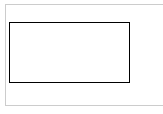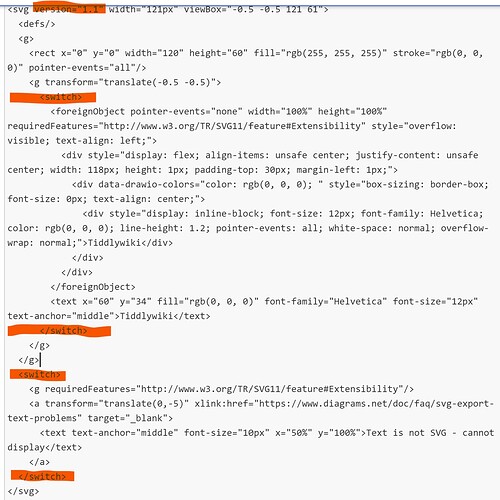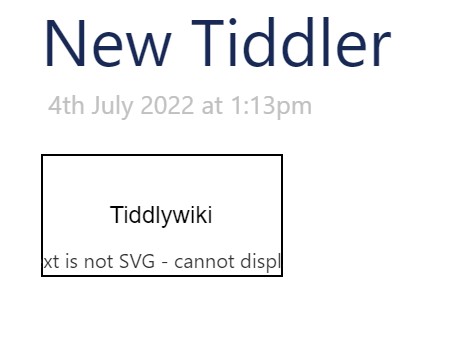Yes, sorry. At the bottom is an SVG. It has the text ‘Tiddlywiki’. The first screenshot is how it looks when pasted int Tiddlywiki.com, the second is when loaded from disk (after wrapping in html and body tags).


<svg xmlns="http://www.w3.org/2000/svg" xmlns:xlink="http://www.w3.org/1999/xlink" version="1.1" width="121px" viewBox="-0.5 -0.5 121 61">
<defs/>
<g>
<rect x="0" y="0" width="120" height="60" fill="rgb(255, 255, 255)" stroke="rgb(0, 0, 0)" pointer-events="all"/>
<g transform="translate(-0.5 -0.5)">
<switch>
<foreignObject pointer-events="none" width="100%" height="100%" requiredFeatures="http://www.w3.org/TR/SVG11/feature#Extensibility" style="overflow: visible; text-align: left;">
<div xmlns="http://www.w3.org/1999/xhtml" style="display: flex; align-items: unsafe center; justify-content: unsafe center; width: 118px; height: 1px; padding-top: 30px; margin-left: 1px;">
<div data-drawio-colors="color: rgb(0, 0, 0); " style="box-sizing: border-box; font-size: 0px; text-align: center;">
<div style="display: inline-block; font-size: 12px; font-family: Helvetica; color: rgb(0, 0, 0); line-height: 1.2; pointer-events: all; white-space: normal; overflow-wrap: normal;">Tiddlywiki</div>
</div>
</div>
</foreignObject>
<text x="60" y="34" fill="rgb(0, 0, 0)" font-family="Helvetica" font-size="12px" text-anchor="middle">Tiddlywiki</text>
</switch>
</g>
</g>
<switch>
<g requiredFeatures="http://www.w3.org/TR/SVG11/feature#Extensibility"/>
<a transform="translate(0,-5)" xlink:href="https://www.diagrams.net/doc/faq/svg-export-text-problems" target="_blank">
<text text-anchor="middle" font-size="10px" x="50%" y="100%">Text is not SVG - cannot display</text>
</a>
</switch>
</svg>



